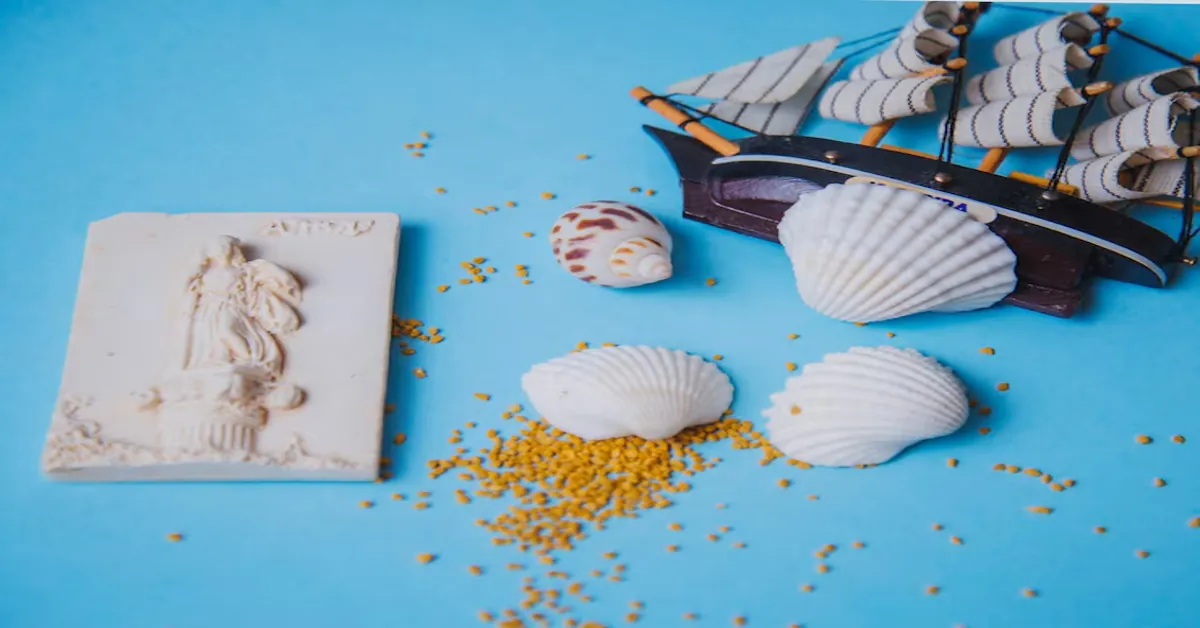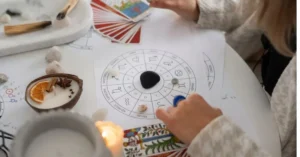The conch shell, with its spiral shape and vibrant hues, has captivated the hearts of many cultures around the world. More than just a beautiful object found on sandy shores, this remarkable natural instrument holds a rich history in music and tradition. From ancient rituals to contemporary performances, conch shells have played an essential role in expressing cultural identity and connecting communities through sound.
As we dive into the fascinating world of conch shells in music, prepare to explore their unique auditory charm and discover how they’ve influenced musical traditions across various cultures. Whether used during ceremonies or as part of celebrations, these shells bring forth sounds that resonate deeply within our souls. Join us on this melodic journey as we uncover the significance behind these extraordinary instruments!
Illustration of a Conch Shell
The conch shell is a stunning marvel of nature, known for its intricate spiral design and smooth surface. When you hold one in your hands, the vibrant colors range from creamy whites to deep oranges and browns. Each shell tells its own story through unique patterns and textures.
These shells are typically large, often measuring up to a foot long. Their size makes them not just beautiful but also functional as musical instruments. The natural curve of the shell allows it to produce distinct sounds that resonate beautifully when blown into.
Artists often take inspiration from the conch’s shape for various illustrations. From detailed sketches highlighting their curves to vivid paintings capturing their hues, artists celebrate this natural wonder in many forms. Such artwork reflects both the beauty and importance of conch shells across cultures.
In many traditions, these illustrations serve more than just an aesthetic purpose; they symbolize connections between people and their environment. They represent harmony with nature while celebrating cultural heritage.
As we explore further into how these shells function musically, it’s essential to appreciate their artistry first—each detail invites us deeper into understanding why conch shells have held such significance throughout history.
Examples of Conch in Music
The conch shell has long captivated musicians and composers alike. Its unique tonal qualities make it a favorite in various cultural contexts. From the shores of the Caribbean to the highlands of South America, its presence is felt far and wide.
In India, for instance, the conch shell holds religious significance. It’s often blown during rituals, producing a sound believed to purify the environment. This ancient practice showcases how deeply embedded conch shells are within Indian culture.
Hawaiian music also embraces this enchanting instrument known as “pu.” The traditional blowing techniques create haunting melodies that evoke feelings of nostalgia and reverence for nature. These sounds serve as both communication tools and artistic expressions within their communities.
Across Africa, particularly among coastal tribes, conch shells feature prominently in celebrations and ceremonies. Their deep tones resonate with cultural stories passed down through generations. Drummers often accompany these vibrant harmonies to enhance spiritual connections during gatherings.
Even modern genres have found ways to incorporate this natural instrument into contemporary compositions. Artists experiment with electronic enhancements while retaining the raw essence of conch sounds—a testament to its adaptability across musical landscapes.
Cultural Significance and History
The conch shell has a rich history embedded in various cultures around the globe. It is not just an instrument; it serves as a powerful symbol of spirituality and community. In many coastal regions, conch shells have been used for centuries in rituals and ceremonies.
In Hindu culture, the conch shell, or “shankha,” represents purity and is often associated with deities. Its sound is believed to drive away evil spirits and bring good fortune. The blowing of the shankha during religious events marks significant moments that are steeped in tradition.
Similarly, among Pacific Islander communities, these shells are linked to ancestral heritage. They’re often used to communicate messages over long distances or signal important gatherings. The deep connection between nature and music reflects how integral conch shells are to their identity.
African tribes also utilize conchs within their musical practices, showcasing them at rites of passage or festivals. Each note played resonates with cultural meaning that spans generations.
This historical significance underscores why conch shells remain cherished today—not merely as instruments but as vessels carrying age-old stories from one generation to another.
The Unique Sound of Conch Instruments
The sound produced by conch instruments is unlike any other. When blown, these shells emit a deep, resonant tone that can carry over long distances. This natural amplification is one of the reasons conch shells have been used in traditional music for centuries.
Each conch shell has its own unique voice. Variations in size and shape affect pitch and tone quality. Some produce low, booming sounds while others create higher pitches that are sharp and clear. Musicians learn to master this diversity, using it to convey emotions through their performances.
In many cultures, the sound of a conch serves more than just a musical purpose; it also carries spiritual significance. The blasts often signify important events or rituals, marking transitions between moments or even calling communities together for gatherings.
Listening to conch instruments evokes a sense of connection with nature and history. It transports listeners back to ancient times when these simple yet powerful tools were central to communal life.
This distinct sonic quality has intrigued composers globally who incorporate the rich timbres of conchs into various genres today. Whether played solo or alongside other instruments, their voice remains captivating and timeless.
Various Types of Conch Instruments
Conch instruments come in various forms, each with its unique sound and cultural significance. The most recognized is the conch shell horn, crafted from large sea shells. Musicians blow into the opening to produce deep, resonating tones that carry over distances.
Another interesting type is the conch flute, which usually features carved holes along its length. Players can create different pitches by covering these holes while blowing air through the shell. This brings a melodic quality that complements traditional music beautifully.
Some cultures also use conch drums made from hollowed-out shells paired with animal skins or other materials for added resonance. These drums are often played during ceremonies and celebrations, enhancing their rhythmic beats with natural acoustics.
In certain regions of Africa and South America, variations of blown conch instruments serve as signaling devices during rituals or communal gatherings. Their piercing calls can summon people together for important events.
Each type of conch instrument showcases not only musical talent but also rich traditions passed down through generations. The craftsmanship involved in creating these tools adds depth to their role in cultural expression.
Conch Shells in Modern Music
Conch shells have made a fascinating transition into modern music, captivating both artists and audiences alike. Their unique sound adds an organic texture that electronic instruments often lack. Musicians are increasingly experimenting with this ancient instrument in various genres.
In the world of pop and rock, some musicians incorporate conch shells to evoke a sense of nostalgia or connection to nature. Bands may use them during live performances, creating an intriguing atmosphere that emphasizes their cultural roots. The deep, resonant tones cut through the mix, providing a refreshing contrast to synthesized sounds.
Hip-hop artists also find inspiration in conch shells’ distinct auditory qualities. Samples from traditional recordings can create unexpected beats and hooks that stand out against mainstream productions. This blend between old and new creates an innovative soundscape for listeners.
World music genres frequently highlight conch shell melodies as well. Festivals celebrating global influences often feature these instruments prominently—drawing attention to their rich heritage while embracing contemporary styles. It’s interesting how they bridge cultures across time zones.
Online platforms allow aspiring musicians worldwide to explore conch shells easily. Tutorials on playing techniques inspire creativity, enabling anyone interested in music to experiment with this timeless instrument at home.
Preserving the Tradition: Conch Shell Instrument Making
The art of making conch shell instruments is a practice steeped in tradition and cultural significance. Craftsmen dedicate years to mastering the techniques required to transform these natural shells into powerful musical tools. Each conch shell carries its own unique sound, shaped by its size, shape, and even the environment where it was found.
Many artisans use age-old methods passed down through generations. They carefully clean the shells, often preserving their intricate exterior while modifying the interior for optimal acoustics. The craftsmanship involved not only highlights artistic skills but also reflects respect for nature’s resources.
Today, workshops around the world are revitalizing this ancient craft. By teaching new generations about conch shell instrument making, they ensure that this rich heritage continues to thrive. Community events often feature performances showcasing these instruments alongside traditional dances and songs.
As global interest grows in diverse music styles, more musicians are integrating conch shells into modern compositions. This blending of old-world craftsmanship with contemporary sounds creates a vibrant dialogue between past and present—a testament to the enduring legacy of conch shells in music culture.
Through passionate efforts aimed at preservation and education, we can keep alive this fascinating aspect of our musical history for future audiences to appreciate. Conch shell instruments symbolize much more than mere sound; they embody stories waiting to be told across time and space.









